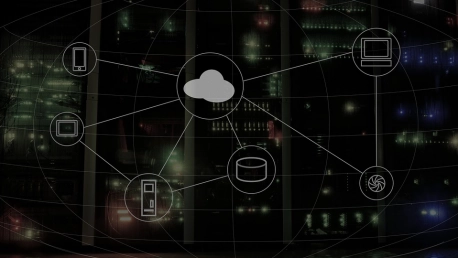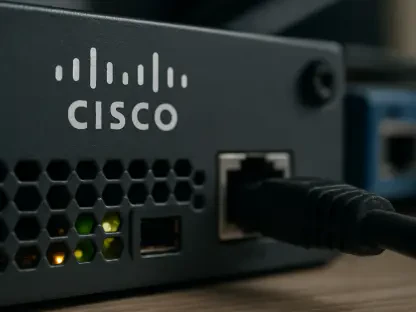When two or more clouds (public, private) are bound together, although they remain distinct, a cloud service is called hybrid cloud. The connection between the two or more distinct clouds can concern the location, the dedicated resources or simply the cloud services, allowing aggregation, integration, and capabilities’ extension of one cloud with another.
If private cloud services excel in privacy protection or cyber-security features, while public cloud services lead in cost saving, availability, storage and deployment capacity, employing hybrid cloud allows users to benefit from both of the previous services’ best features.
Hybrid cloud computing
is considered one of the enterprise tech trends for 2016 and beyond. Once businesses relinquish their fears and reticence towards cloud migration, fueled especially by cloud security risks, hybrid cloud offers the best way of keeping critical data private while in the same time benefit from public cloud capacities whenever necessary.
The debate over whether companies should invest in hybrid cloud or not
mainly considers the cost saving argument and the developing capabilities in cloud infrastructures. Let’s see how that stands in hybrid cloud versus public or private cloud.
When companies need not be extremely concerned with cyber-security risks, the cyber-protection levels provided by public cloud platforms should cover the necessities, as long as the providers are high-quality professionals and manage all the infrastructure in a very serious and meticulous manner.
In the case of an organization that needs to have tight control over its data and cannot afford the slightest risk, a precautionary approach makes private cloud infrastructure worth investing in.
Investing in hybrid and, by extension, private cloud still received a negative answer in 2016 from Lydia Leong, an analyst in the IT Leaders group at Gartner. The motivation resides in the second argument: developing capacities. Private cloud (or mainly private, as it is in the hybrid schemes) does not have the power to evolve and develop that is available to public cloud. Technology and resources-wise, it will lag behind public cloud platforms, therefore the motivation for investing in private/hybrid clouds should comprise a really strong need for airtight security protection. *Another important feature of private cloud would be that Internet connection disruptions do not affect the process of retrieving data from the cloud, (although there are other on-premises storage devices that might ensure continuous data availability).
Nevertheless, hybrid cloud appears to reunite the best of both worlds – public and private. While allowing organizations to keep their peace of mind security-wise, it also brings on the benefits of public cloud infrastructure, its agility and heterogeneous resources.
We have seen the why, (even if the specialist’s opinions are still divided on whether enterprises should make the jump to hybrid cloud by default, or postpone this decision just yet). Now let’s introduce a few of the “hows” in what hybrid cloud computing is concerned.
Cloud bursting
is a very important notion in hybrid – it means that where IT workloads vary in an organization’s environment, the applications would burst from private cloud into public cloud only when necessary, as an answer to the temporary demands for a higher capacity. Thus the private-public equation resolves the company’s computing needs, at lower costs.
As you may have noticed by now, hybrid cloud exists only in an architectural sense; it is in fact the result of a mixture between private and public cloud, in terms of capabilities, functions, workload and scalability.
Enterprises may deploy the usage of hybrid cloud coming from two different direction:
- When they have previously employed public cloud exclusively and decided to tighten their cyber-security by investing in a private cloud core that would cover their mission-critical workloads (reason: enhancing cyber-security);
- When they have previously employed private cloud and decided to enhance capabilities and workload capacity by using public cloud for part of their IT needs (reason: enhancing their computing abilities).
Hybrid cloud management is obviously a mixed and complex task. For example, three main challenges would be surpassing the migration process, considering it is an extremely complex phase; facing the two-scale complications involved in hybrid (e.g. event volumes exponentially grow, CMDBs have to re-adapt and critical events are harder to locate, fragmentation ensues); unexpected cost complications that may take the company by surprise if it has not strategically planned and prospected ahead.
Remaining in control of your data privacy and cyber-protection is extremely important even during the migration and readjustment process. Cyber-intruders do not go by the rules of any game and most definitely will take advantage if possible from this transition period. In any case, during readjustment and forward, managing risk in the hybrid cloud takes a specially tailored approach, as you may see here.
Beginning with a complex assessment, going through effective controls’ establishing, ensuring visibility across all endpoints and finding ways to expose and include into the management activities the shadow IT part of the company’s cloud activities – these are all useful steps that can be employed by internal specialized staff or by off-premises service providers.
When deciding to go for hybrid, companies need not worry in what tools are concerned. Since hybrid is nor declared the dominant cloud-computing trend in enterprise IT, many vendors have met this tendency by offering specialized services and software.
Although it is considered that Amazon Web Services, Microsoft (Azure) and Google (Cloud Platform) are not the leaders in hybrid management tools provision, out of tactical competitive reasons (they would help companies go against their already existing platforms and services), there are vendors which made the cut, such as Hewlett Packard Enterprise, BMC, Microsoft and Citrix.
This does not mean that already-existing cloud services cannot be grafted to include new, hybrid-dedicated tools and functionalities, if necessary. It is just that this activity requires a great deal of knowledge and meticulousness, in order for the final result to work seamlessly and without security and functionality flaws. Either way, hybrid is attainable with just a little patience, determination and with the help of specialists.









